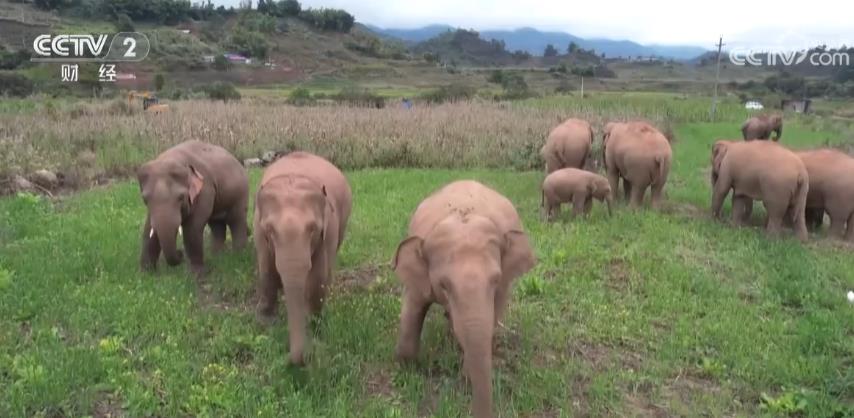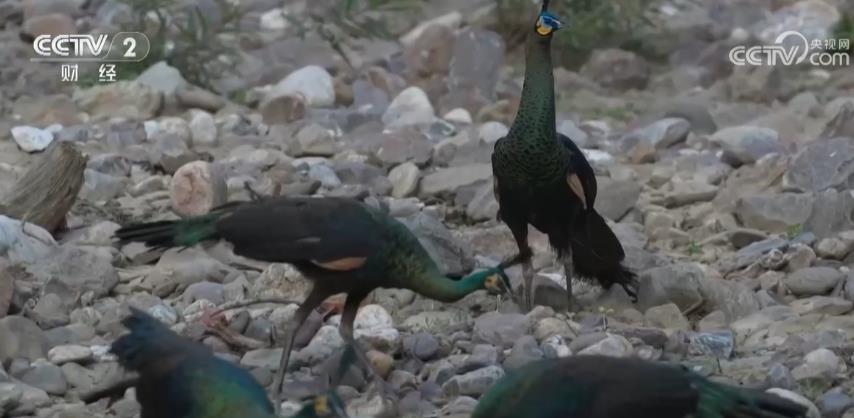On the International Day for the Protection of Rare Animals, I met wild Asian elephants and green peacocks in Yunnan
CCTV News:April 8th is the International Day for the Protection of Rare Animals. We walked into Jiangcheng County, Pu ‘er, Yunnan Province, one of the habitats of Asian elephants, to see the activities of local Asian elephants.
Early in the morning, the reporter followed the Asian elephant monitoring team to the Manlao River in Dashujiao Village, Kangping Town, Jiangcheng County. According to the staff, there were 42 wild Asian elephants in this area recently.

In view of the shortage of food for elephants in winter, corn, sugar cane, bananas, etc. are specially planted in some specific areas for elephants to eat. These places are also called "elephant canteens". However, at this time, corn and sugarcane have just entered the cultivation period, and there is relatively little food in the wild, which leads to more frequent activities of elephants entering the village and is prone to injury accidents. Therefore, the local people deliberately artificially feed at the entrance of some villages.

In addition to feeding the Asian elephants well, the daily focus of the staff is to monitor the range of activities of the Asian elephants.After locating the elephant activity area, the staff immediately controlled the roads along the way and placed warning signs. At the same time, they issued early warnings through WeChat group, monitoring and early warning platform and village broadcasting, and tracked the monitoring activities with drones.
Yunnan Shuangbai: Photographers shot a lot of rare green peacock videos.
Green peacock is a national first-class protected wild animal, mainly distributed in Yunnan Province and some Southeast Asian countries. At present, the number in China is only between 550 and 600. Green peacocks are timid and difficult to approach, so there are few related videos except a few pictures taken by infrared cameras. Recently, photographers have been crouching for 6 days, shooting a large number of green peacock videos with a 360-degree panorama camera.

In the picture, these green peacocks are foraging by the river bed. It’s the breeding season of green peacocks. During the period of crouching, the photographer photographed that these green peacocks sometimes play, sometimes take a sand bath in the river valley, and sometimes unfold a long tail screen.

Gu Bojian, a teacher at the School of Ecological Environment of Ningxia University: "There are both adult birds and adult birds in the picture. The male green peacock of an adult bird has a shorter tail screen than that of an adult bird. This season is the breeding season for green peacocks. The males have long tail screens, and the feathers in other parts of their bodies are also the most glamorous. Green peacocks can get rid of parasites and keep their feathers bright through sand bath. "
According to experts, this group of green peacocks in front of us was photographed by the infrared camera of the Management and Protection Bureau of Dinosaur River State Nature Reserve in May last year. At that time, they were still chicks with gray-black feathers. After nearly a year, these green peacocks have grown bright feathers and long tail screens.
Wang Sibeng, Director of the Management and Protection Bureau of Dinosaur River State Nature Reserve in Shuangbai County: "As the only original peacock population in China, there are about 550— 600, all distributed in Yunnan Province. According to the monitoring data of the nature reserve, there are about 360 native green peacocks in Shuangbai County, accounting for more than half of the national population. "